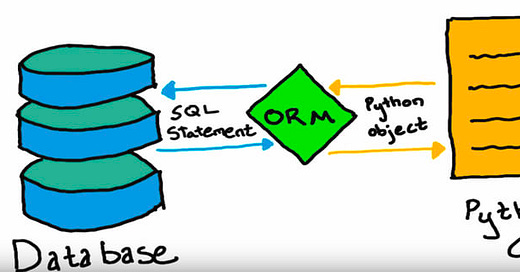Upgrade to paid to play voiceover
The TL;DR
An ORM is software that lets developers interact with their database in their programming language of choice – instead of SQL.
Most apps are built on relational databases like MySQL or PostgreSQL, which you talk to using SQL
SQL is great, but can get complicated and unwieldy when building web apps
ORMs translate SQL into languages developers are b…
Keep reading with a 7-day free trial
Subscribe to Technically to keep reading this post and get 7 days of free access to the full post archives.




